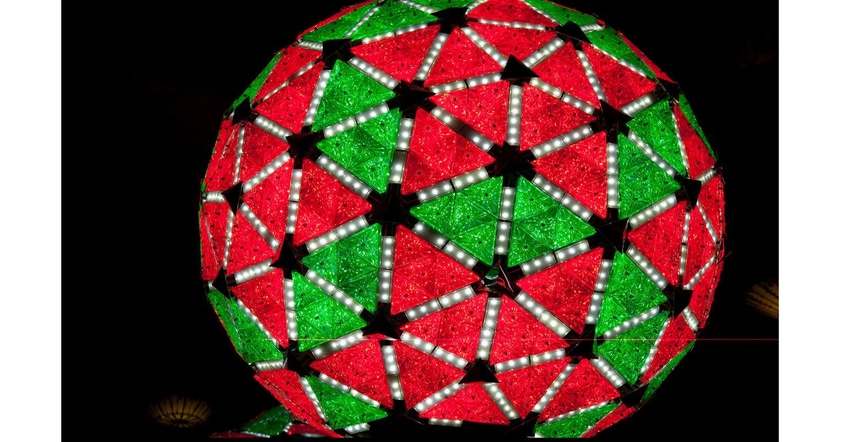As has been the case for over a century, a geodesic sphere will descend at 11:59 pm on December 31 in Times Square, New York City, to ring in the New Year. Here’s the rich history behind the famous ball, which has changed again for 2024.

The descent of the New Year’s Eve ball in Times Square is eagerly anticipated by upwards of hundreds of thousands of spectators every year who come from near and afar to witness this spectacle. Millions of others watch this event in the comfort of their homes, huddled with family and loved ones.
While most of us almost take this event for granted, there is an interesting history to New Year’s Ball, as several key technology enhancements over the years now make the ball a glistening technology wonder. The Times Square Alliance, a non-profit group that since 1992 has promoted the well-being of businesses and visitors in the area, has documented the history of the New Year’s Ball on its site, and Design News appreciates the opportunity to cite some fun facts on the ball from its site.
Fireworks, Not a Dropping Ball
According to the Times Square Alliance, the first New Year’s Eve celebration in Times Square occurred in 1904, but there was no ball yet. Instead, fireworks were set off from the base of the Times Tower at the intersection of 7th Avenue, Broadway, and 42nd Street.
On its site, the Times Square Alliance noted that the first New Year’s ball drop did not occur until the 1907-1908 New Year’s celebration. This iron and wood ball, measuring 5 feet in diameter and weighing a hefty 700 pounds, was adorned with 100 25-W light bulbs and was lowered from the Times Square Tower.
The Alliance noted on its site that in 1920, the iron and wood ball was replaced with a wrought iron ball that weighed 400 pounds. That ball lasted until 1955, when an aluminum ball weighing a lightweight 150 pounds was introduced.
In the 1980s, the New Year’s ball was adorned with red light bulbs and a green stem as part of the “I Love New York” marketing campaign, making the ball look like an Apple. The Alliance noted that New Year’s ball returned to the familiar glowing white design in 1988, until its retirement in 1998.
New Millennium, New Ball
New Year’s 2000 was arguably one of the most anticipated celebrations of all time, and perhaps not surprisingly a spanking new ball was unveiled for this milestone celebration.
Waterford Crystal and Philips Lighting redesigned the New Year’s ball with a combination of traditional materials and state-of-the-art lighting. In 2007, for the 100th anniversary of the Times Square Ball Drop tradition, Waterford Crystal and Philips Lighting designed a new LED crystal Ball that replaced the incandescent and halogen bulbs with Philips Luxeon LEDs. The LEDs dramatically increased the brightness and color capabilities of the Ball.
According to the Times Square Alliance, the beauty and energy efficiency of the Centennial Ball inspired One Times Square’s building owners to build the permanent Big Ball weighing nearly six tons and twelve feet in diameter. The 2,688 Waterford Crystal triangles are illuminated by 32,256 Philips Luxeon LEDs. The New Year’s Eve Ball is now a year-round attraction sparkling above Times Square in full public view from January through December.
For 2024, the ball has once again undergone a makeover. This year's ball has a bowtie pattern that ties into the partner sponsor Fontainebleau, which just opened up a hotel in Las Vegas.
You can preview the ball in the video.
Spencer Chin is a Senior Editor for Design News covering the electronics beat. He has many years of experience covering developments in components, semiconductors, subsystems, power, and other facets of electronics from both a business/supply-chain and technology perspective. He can be reached at [email protected].
About the Author(s)
You May Also Like





